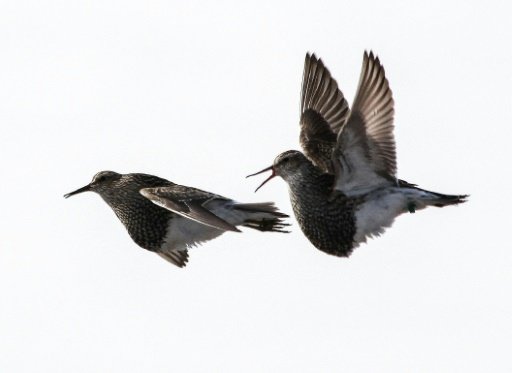
A handout photo released on January 9, 2017 by Nature shows two male pectoral sandpipers flying between distant breeding sites to mate with as many females as possible within a single breeding season -AFP photo
PARIS: A bird smaller than a city pigeon has been recorded flying 13,000 kilometres (8,000 miles) in just a month to have sex with as many females as possible, awed scientists reported Monday.
In behaviour never witnessed before, male pectoral sandpipers were observed travelling to as many as 24 different “breeding sites” in northern Alaska within a single season, a team wrote in the journal Nature.
A breeding season lasts a mere four to six weeks.
“Males have to reduce their sleep and defend and court females virtually non-stop throughout the endless Arctic summer days to successfully reproduce,” the Max Planck Institute for Ornithology, in Seewiesen, Germany, said in a statement.
The average bird covered some 3,000 km (further than flying from Paris to Moscow) — but one particularly determined specimen was recorded flying 13,045 km in just four weeks.
And this was after the birds, which are about 21 cm (8.3 inches) long and weigh about 100 grammes (3.5 ounces), journeyed halfway across the globe from South America, where they overwinter, to their Alaskan breeding grounds.
“Before we made this discovery, it was thought that birds (males and females) migrate from their wintering area to a single site, where they breed in that year,” said the institute’s Bart Kempenaers, who co-authored the study based on tracking 120 radio-tagged sandpipers.
Competition for females is tough among these polygynous birds, and those who settle down in a single spot had little chance of copulation.
“We think that they have developed the strategy to assess their local chances, and if they are not good, they just move on to the next place,” said Kempenaers.
The most successful bird sired 22 offspring with six different females. -AFP
